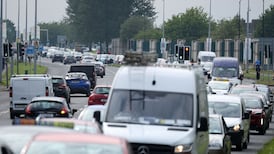The levels of potentially dangerous dioxins in the Irish environment are a third lower than a decade ago and a fifth lower than 2000, it emerged today.
A new Environmental Protection Agency (EPA) survey confirmed the level of compounds, which in some cases can be highly toxic and cause cancer, affect the skin or damage the immune system, were among the lowest in Europe.
"These concentrations were uniformly low by international standards," the report stated.
"The highest level found was more than six times lower that the EU limit for dioxins in milk." The EPA said dioxins are generated by a number of industrial processes such as incineration of medical waste or burning coal to generate electricity.
It said the fall could be largely accounted for by cleaner fuel and tightening environmental regulations. "Examples of measures that were taken in Ireland and which may have had an impact on dioxin levels were the virtual abolition of leaded petrol and the shutting down of all hospital incinerators," it said.
The EPA said there were no sources of great concern in the results despite the amount of dioxins in the air around Cork Harbour almost doubling in the last four years.
"There were no unusually high values meriting particular attention in any of the type A or type B samples," the report said.
"There was a tendency towards slightly higher values in the east coast samples just as in the 2000 survey, but even these levels were low by comparison with similar studies in other countries."
The report's findings were based on a survey of dioxins and dioxin-like compounds in cow's milk undertaken in mid 2004.
The analysis of cows' milk was considered to be particularly suitable since cows tend to graze over relatively large areas and dioxins will, if present, concentrate in the fat content of the milk.







